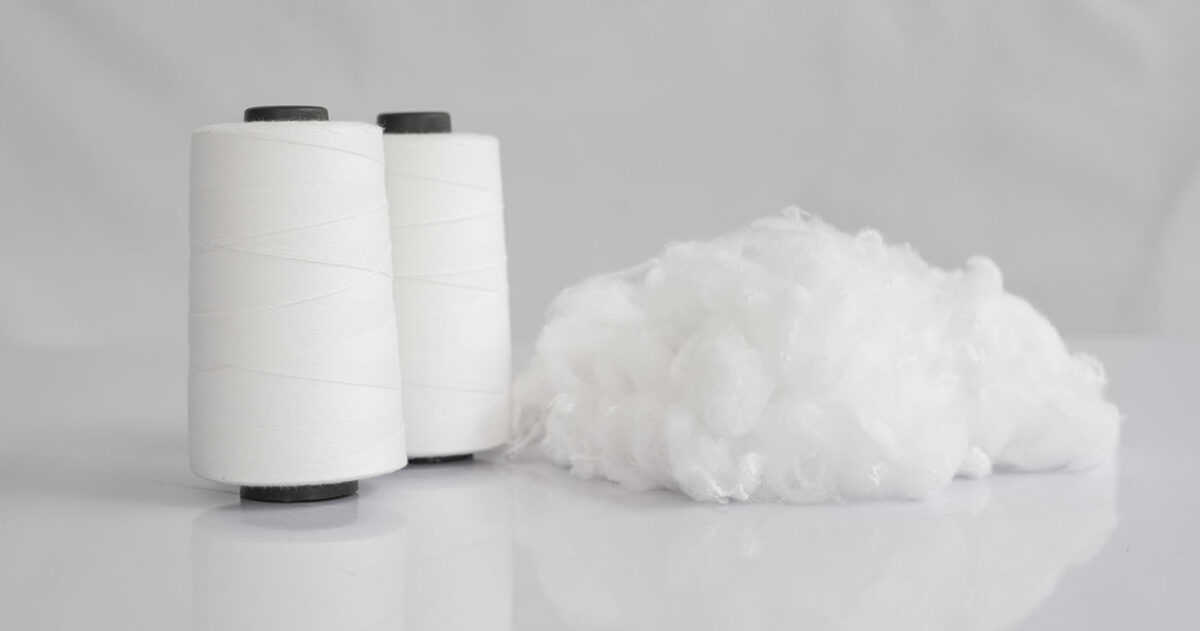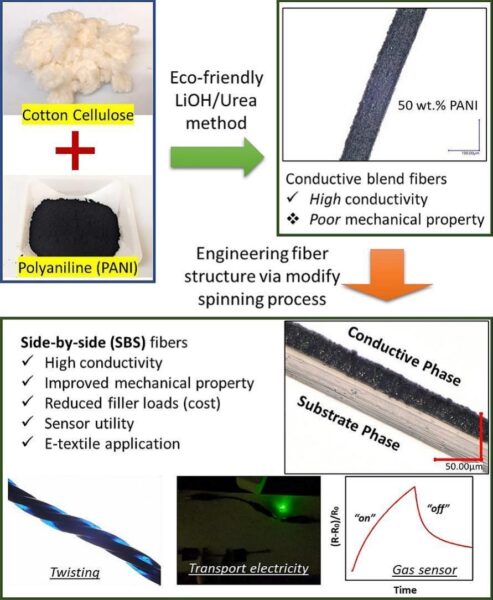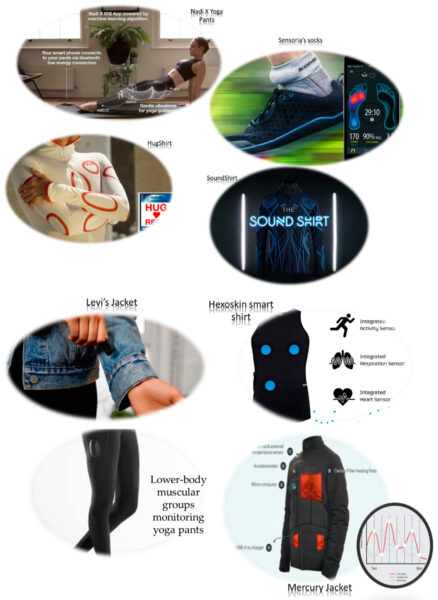Cotton Transformed: Next-Gen Innovation with Conductive Fibers

Researchers at Washington State University have developed an exciting new conductive, cotton-based fiber that melds cotton’s flexibility with the electrical conductivity of polymers.
Smart polymer technology revolutionizes the textile industry, enabling materials to react dynamically to environmental indicators such as moisture and temperature. These materials go beyond thermally responsive fabrics, now allowing the creation of sophisticated e-textiles with sensing, energy storage, and dynamic visual capabilities.
You can also read: The Fashion Industry Needs an Alternative to Recycled PET
Recent advancements have expanded upon the investigation of smart polymers in textile applications, introducing an innovative approach to creating multifunctional e-textiles by integrating novel fiber designs.
Dual-Phase Conductive Fibers
The newly developed side-by-side (SBS) conductive fibers feature a dual-phase structure where cellulose serves as the substrate, and polyaniline (PANI), a conductive polymer, embeds alongside. This configuration optimizes the fiber for strength and electrical conductivity by leveraging the unique properties of each material. Furthermore, the side-by-side arrangement allows the fibers to maintain distinct conductivity and structural integrity zones, enhancing mechanical properties and performance.
Consequently, conductivity measurements show that these fibers can achieve resistivity levels suitable for sensor integration in smart garments. Similarly, mechanical tests confirm that the fibers maintain high tensile strength, essential for the durability required in wearable applications. Moreover, engineers have designed the interface between the PANI-loaded and cellulose phases to ensure strong adhesion, minimizing delamination and wear over time.

Cellulose-based conductive composite fibers properties. Courtesy of Carbohydrate Polymers Journal.
Wearable Applications and Health Monitoring
These conductive fibers are perfectly suited for smart textiles aimed at health monitoring and environmental sensing. Moreover, they can be woven into garments to create interactive clothing that not only tracks health indicators, such as heart rate and body temperature but also detects hazardous environmental substances. This capability is invaluable for professional gear in fields like firefighting and chemical handling, where real-time monitoring is crucial.

Examples of wearable electronic smart textiles Courtesy of Smart Fabric Textiles: Recent Advances and Challenges.
Fitness and Performance Tracking
Integrating these fibers into fitness apparel could revolutionize how athletic performance is monitored, moving beyond the capabilities of traditional fitness trackers. Additionally, this integration allows garments to continuously monitor physiological responses and provide real-time feedback, merging technology seamlessly with user experience.
Environmental Sensing for Safety and Awareness
SBS conductive fibers are promising for creating clothing that monitors air quality, useful for those in harmful environments. These garments can detect dangerous gases such as carbon monoxide or ammonia, alerting wearers via changes in color or electronic signals. They also suit outdoor clothing, monitoring UV radiation and other environmental factors to provide timely data for adapting to changes.
The innovative design and dual-material use in SBS conductive fibers greatly enhance the utility of textiles. Positioned as pivotal for the next generation of smart textiles, these applications boost personal safety and health monitoring. They also pave the way for integrating technology into everyday life through innovative smart fashion.
